- Home
- About Us
- Industry
- Services
- Reading
- Contact Us
HetNet Ecosystem Market: Current Analysis and Forecast (2024-2032)
Emphasis on Type (Femtocells, Picocells, and Microcells); Application (Residential, Enterprise, and Others); and Region/Country
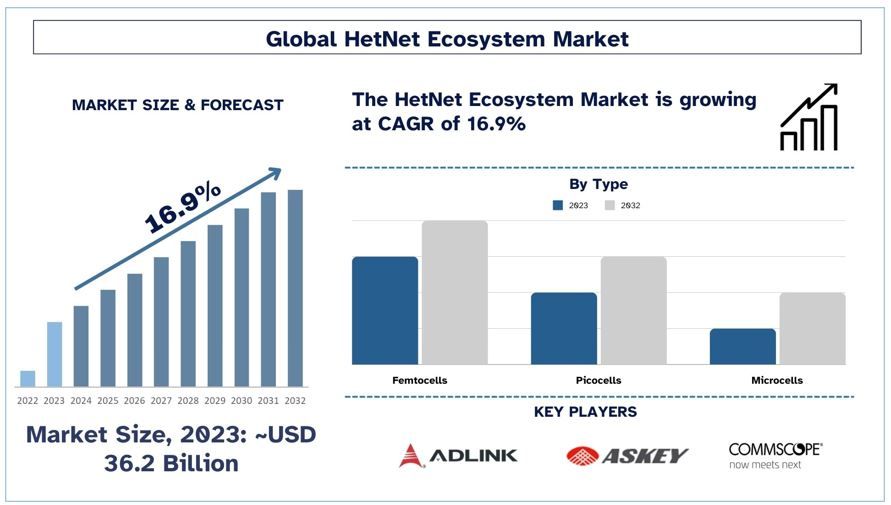
Global HetNet Ecosystem Market Size & Forecast
The global HetNet ecosystem market was valued at USD 36.2 billion in 2023 and is expected to grow at a strong CAGR of around 16.9% during the forecast period (2024-2032) owing to various government initiatives supporting the development of telecommunications infrastructure drive investment in HetNet, particularly for smart cities and rural areas.
HetNet Ecosystem Market Analysis
HetNet (Heterogeneous Network) Ecosystem describes the blend of several technologies such as macro cells, small cells, Wi-Fi, DAS, and carrier-grade equipment to boost coverage, ability, and performance of the global wireless network. This market is spurred by the increasing need for mobile data, especially the high speed, 5GMORE, and the requirement of mobile connectivity in areas of high population density and indoors. Some primary drivers include the growth of IoT devices, high mobile data usage, and the evolution of wireless technology which makes telecom operators opt for HetNet solutions in addressing spectrum, quality, and traffic challenges.
Global HetNet Ecosystem Market Trends
This section discusses the key market trends that are influencing the various segments of the global HetNet Ecosystem market, as found by our team of research experts.
Femtocells Segment Transforming Industry
The femtocells segment is likely to dominate the HetNet ecosystem market as these devices help improve the network coverage inside buildings, a major concern that affects urban networks. With femtocells being low-power cellular base stations, subscriber mobile operators to subscriber traffic from the macro networks while delivering a better-quality experience in homes, offices, and small businesses. This economizes the overall network use, especially within busy zones. Their involvement in HetNets makes them add value since they provide coverage, ability, and spectrum complementing macro cells, Wi-Fi, and the rest of the small cells, especially for the 5G systems. This capability makes femtocells indispensable for mobile network densification, and indeed, for the growth of the HetNet market.
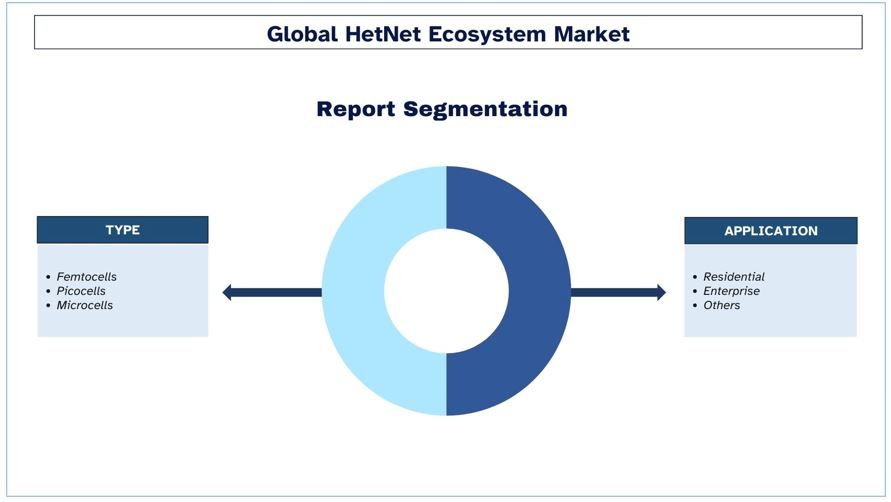
North America is Expected to Dominate the market during the forecast period.
The North American HetNet Ecosystem market is set to see rapid advancement in demand owing to the need for continuous connectivity, higher data speeds, and networkability partly because mobile data usage grows based on applications such as streaming, gaming, and IoT. The region has one of the most developed telecommunication markets, SDN/NFV solutions, combined with the ongoing 5G network rollouts, have propelled the use of Heterogeneous Network solutions like small cells, femtocells, and Wi-Fi offloading technologies. Currently, most of the main telecom operators and service providers are extending their focus on network densification to fill areas of weakness in urban settings and deliver superior service to users. In addition, the regulatory points for the services and the competition within the service suppliers are also fostering advancements in HetNet solutions, making North America the leading global market for heterogeneous networking solutions.
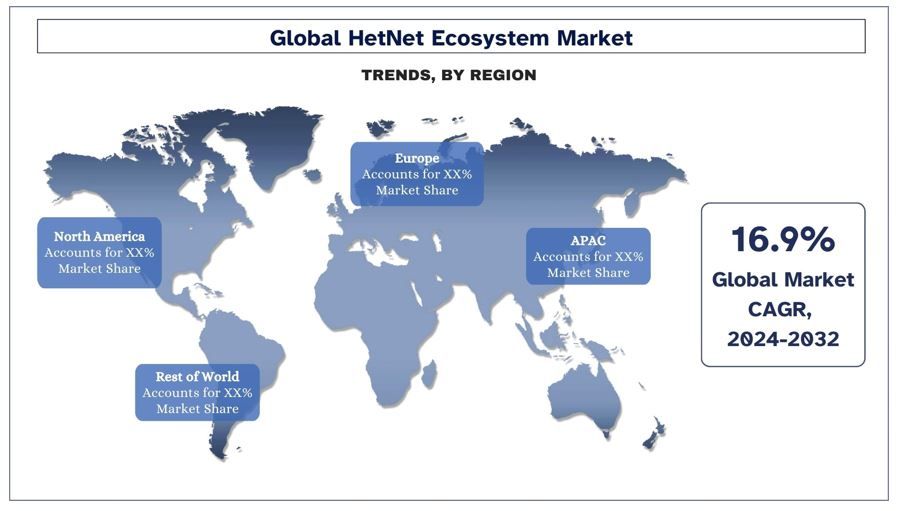
Global HetNet Ecosystem Industry Overview
The global HetNet Ecosystem market is competitive, with several global and international market players. The key players are adopting different growth strategies to enhance their market presence, such as partnerships, agreements, collaborations, new product launches, geographical expansions, and mergers and acquisitions. Some of the major players in the market are CommScope; NXP Semiconductors; Nokia; Telefonaktiebolaget LM Ericsson; 3GPP; Cisco Systems, Inc.; Fujitsu; ADLINK Technology Inc.; Askey Computer Corp.; Hewlett Packard Enterprise Development LP.
Global HetNet Ecosystem Market Report Coverage
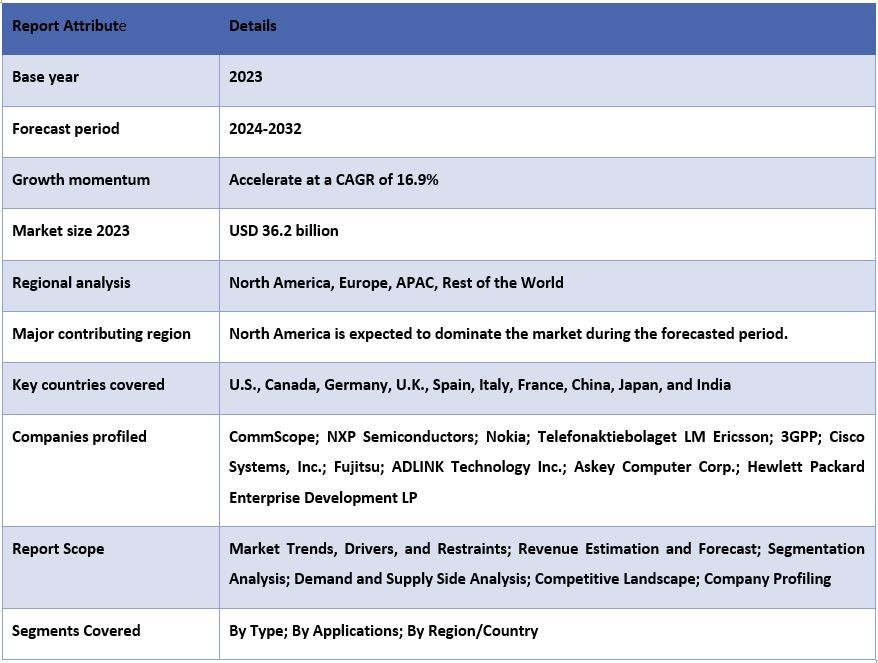
Reasons to buy this report:
- The study includes market sizing and forecasting analysis confirmed by authenticated key industry experts.
- The report briefly reviews overall industry performance at one glance.
- The report covers an in-depth analysis of prominent industry peers, primarily focusing on key business financials, type portfolios, expansion strategies, and recent developments.
- Detailed examination of drivers, restraints, key trends, and opportunities prevailing in the industry.
- The study comprehensively covers the market across different segments.
- Deep dive regional level analysis of the industry.
Customization Options:
The global HetNet ecosystem market can further be customized as per the requirement or any other market segment. Besides this, UMI understands that you may have your own business needs, hence feel free to contact us to get a report that completely suits your requirements.
Table of Content
Research Methodology for the Global HetNet Ecosystem Market Analysis (2024-2032)
Analyzing the historical market, estimating the current market, and forecasting the future market of the global HetNet Ecosystem market were the three major steps undertaken to create and analyze the adoption of the global HetNet Ecosystem in major regions. Exhaustive secondary research was conducted to collect the historical market numbers and estimate the current market size. Secondly, to confirm these insights, numerous findings and assumptions were considered. Moreover, exhaustive primary interviews were conducted with industry experts across the value chain of the global HetNet Ecosystem market. For the assumption and validation of market numbers through primary interviews, we employed a top-down/bottom-up approach to forecasting the complete market size. Thereafter, market breakdown and data triangulation methods were adopted to estimate and analyze the market size of segments and sub-segments of the industry pertains to. The detailed method is explained below:
Analysis of Historical Market Size
Step 1: In-Depth Study of Secondary Sources:
A detailed secondary study was conducted to obtain the historical market size of the global HetNet Ecosystem market through company internal sources such as annual reports & financial statements, performance presentations, press releases, etc., and external sources including journals, news & articles, government publications, competitor publications, sector reports, third-party database, and other credible publications.
Step 2: Market Segmentation:
After obtaining the historical market size of the global HetNet Ecosystem market, we conducted a detailed secondary analysis to gather historical market insights and share for different segments & sub-segments for major regions. Major segments are included in the report, such as type, application, and region. Further country-level analyses were conducted to evaluate the overall adoption of testing models in that region.
Step 3: Factor Analysis:
After obtaining the historical market size of different segments and sub-segments, we conducted a detailed factor analysis to estimate the current market size of the global HetNet Ecosystem market. Further, we conducted factor analysis using dependent and independent variables such as type, application, and global HetNet Ecosystem market regions. A thorough analysis of demand and supply-side scenarios was conducted considering top partnerships, mergers and acquisitions, business expansion, and product launches in the global HetNet Ecosystem market.
Current Market Size Estimate & Forecast
Current Market Sizing: Based on actionable insights from the above 3 steps, we arrived at the current market size, key players in the global HetNet Ecosystem market, and market shares of the segments. All the required percentage shares split, and market breakdowns were decided using the above-mentioned secondary approach and were verified through primary interviews.
Estimation & Forecasting: For market estimation and forecast, weights were assigned to several factors including drivers & trends, restraints, and opportunities available for the stakeholders. After analyzing these factors, relevant forecasting techniques i.e., the top-down/bottom-up approach were applied to arrive at the market forecast 2032 for different segments and sub-segments across the major markets globally. The research method adopted to estimate the market size encompasses:
- The industry’s market size, in terms of revenue (USD) and the adoption rate of the global HetNet Ecosystem market across the major markets domestically
- All percentage shares, splits, and breakdowns of market segments and sub-segments
- Key players in the global HetNet Ecosystem market in terms of types offered. Also, the growth strategies adopted by these players to compete in the fast-growing market.
Market Size and Share Validation
Primary Research: In-depth interviews were conducted with the Key Opinion Leaders (KOLs) including Top Level Executives (CXO/VPs, Sales Head, Marketing Head, Operational Head, Regional Head, Country Head, etc.) across major regions. Primary research findings were then summarized, and statistical analysis was performed to prove the stated hypothesis. Inputs from primary research were combined with secondary findings, hence turning information into actionable insights.
Split of Primary Participants in Different Regions
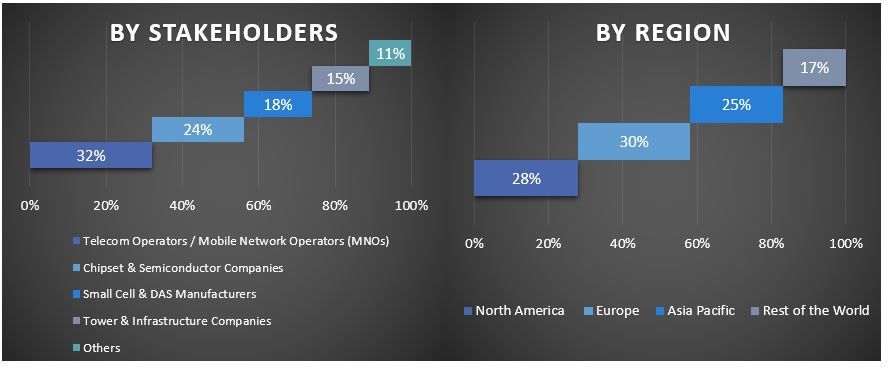
Market Engineering
The data triangulation technique was employed to complete the overall market estimation and to arrive at precise statistical numbers for each segment and sub-segment of the global HetNet Ecosystem market. Data was split into several segments and sub-segments after studying various parameters and trends in the global HetNet Ecosystem market’s type, application, and regions.
The Main Objective of the Global HetNet Ecosystem Market Study
The current & future market trends of the global HetNet Ecosystem market were pinpointed in the study. Investors can gain strategic insights to base their discretion for investments on the qualitative and quantitative analysis performed in the study. Current and future market trends determined the market’s overall attractiveness at a regional level, providing a platform for the industrial participant to exploit the untapped market to receive help from a first-mover advantage. Other quantitative goals of the studies include:
- Analyze the current and forecast market size of the global HetNet Ecosystem market in terms of value (USD). Also, analyze the current and forecast market size of different segments and sub-segments.
- Segments in the study include areas of the type, application, and regions.
- Define and analyze the regulatory framework for the industry.
- Analyze the value chain involved with the presence of various intermediaries, along with analyzing customer and competitor behaviors of the industry.
- Analyze the current and forecast market size of the global HetNet Ecosystem market for the major regions.
- Major countries of regions studied in the report include Asia Pacific, Europe, North America, and the Rest of the World
- Company profiles of the global HetNet Ecosystem market and the growth strategies the players adopt to sustain the fast-growing market.
- Deep dive regional level analysis of the industry
Frequently Asked Questions FAQs
Q1: What is the global HetNet Ecosystem market’s current market size and growth potential?
Q2: What are the driving factors for the growth of the global HetNet Ecosystem market?
Q3: Which segment has the largest global HetNet Ecosystem market share by type category?
Q4: What are the emerging technologies and trends in the global HetNet Ecosystem market?
Q5: Which region will dominate the global HetNet Ecosystem market?
Related Reports
Customers who bought this item also bought










